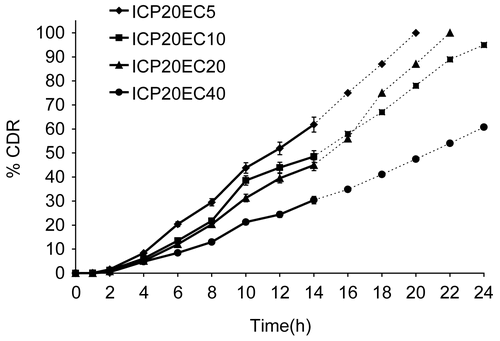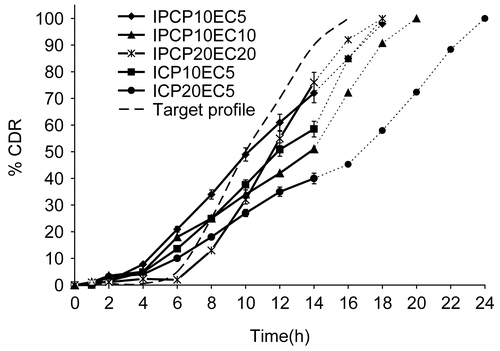Figures & data
Table 1. Composition, physical characterization, and release rate kinetics of polycarbophil-based formulations.
Table 2. Composition, physical characterization, and release rate kinetics of carbopol-based formulations.
Figure 1. Release profile of indomethacin from matrix tablets with varying proportion of PCP. Each data point is expressed as mean ± SD (n = 6).

Figure 2. Release profile of indomethacin from matrix tablets with varying proportion of CP. Each data point is expressed as mean ± SD (n = 6).
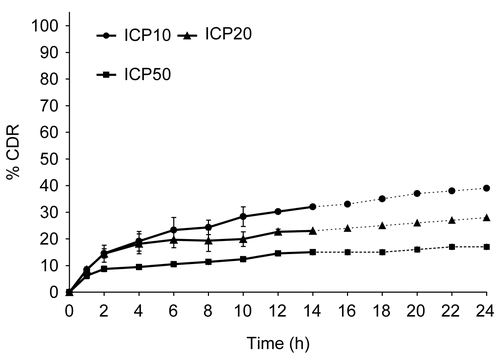
Figure 3. Release profile of indomethacin from matrix tablet showing effect of varying proportion of EC on 10% PCP. Each data point is expressed as mean ± SD (n = 6). The dotted trend line represents the predicted release profile for each formulation beyond 14 h till 24 h.
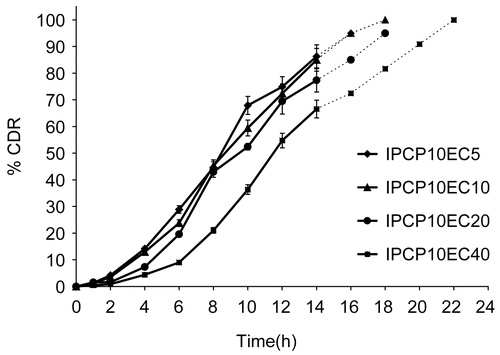
Figure 4. Release profile of indomethacin from matrix tablet showing effect of varying proportion of EC on 20% PCP. Each data point is expressed as mean ± SD (n = 6). The dotted trend line represents the predicted release profile for each formulation beyond 14 h till 24 h.
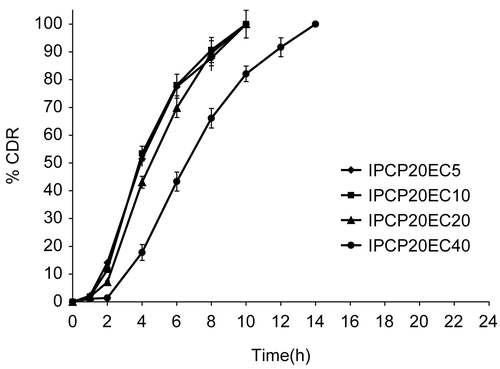
Figure 5. Release profile of indomethacin from matrix tablet showing effect of varying proportion of EC on 10% CP. Each data point is expressed as mean ± SD (n = 6). The dotted trend line represents the predicted release profile for each formulation beyond 14 h till 24 h.

